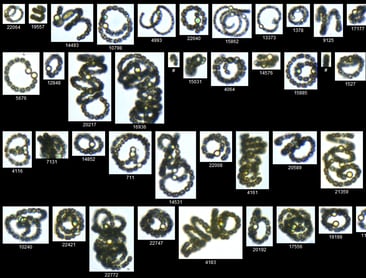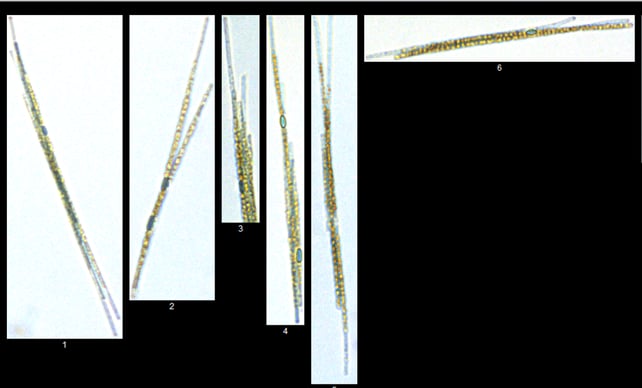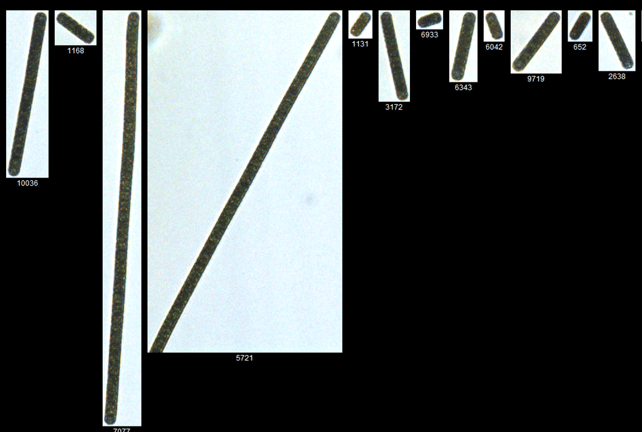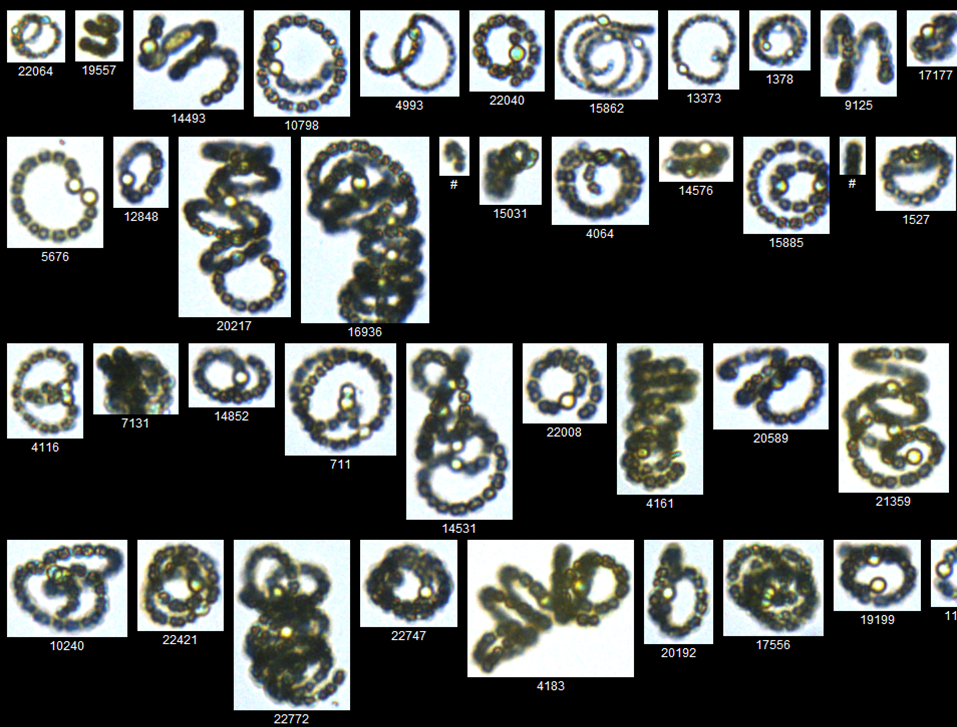I recently had the opportunity to speak with FlowCam users at Newport News Waterworks in the City of Newport News, Virginia. Serving over 400,000 people the waterworks owns and operates 5 reservoirs and more than 12,000 acres of watershed property.
Sherry Williams is the Water Quality Control Supervisor, and Anna-Maria Miller is the Laboratory Analyst who uses the FlowCam regularly. They originally bought their FlowCam in 2011 to help monitor for taste and odor algae, as well as filter clogging algae. Recently they took advantage of a trade-in/upgrade option and are soon getting a new FlowCam Cyano to monitor for harmful cyanobacteria.

Anabaenopsis, one type of cyanobacteria responsible for the blooms in Newport News resevoirs. PC: Newport News Waterworks
Download the case study "Monitoring for Taste and Odor Algae at Newport News Waterworks" here.
Here is a recap of our conversation...
FIT: Hi, Sherry. What was the big picture impact of the FlowCam? How has it impacted the organization and the way you serve your customers?
Sherry Williams: The FlowCam provides us better quality data that helps operations make process changes within the water treatment plant and additional data to consider in raw water pumping strategies.
FIT: Do you have any metrics that demonstrate success with the FlowCam?
Sherry Williams: The manual microscopic examinations were more subjective and not necessarily quantifiable. With the FlowCam, we have more analytical, quantifiable results, and the ability to trend results. Keeping images of the data also helps with the historical trending.
FIT: Hi, Anna-Maria. You've been with Newport News Waterworks for about 4.5 years. In your experience, what concerns does the public have about your water quality?
Anna-Maria Miller: Customers are instantly very disturbed by algae blooms that may cause a taste and odor event, even if those that occur are very minor. As a result, we are always on our toes making sure that does not happen.
FIT: Prior to having a FlowCam, what was your process for addressing these issues?
AMM: We have had the FlowCam the entire time I've been here. I know that at one point we had an employee who monitored algae with a microscope, but I do not know the exact frequency or scope of her work. I think we got the FlowCam because after she retired it was too labor intensive to continue with the method she was using.
 Aphanizomenon, a common filter-clogging algae. PC: Newport News Waterworks
Aphanizomenon, a common filter-clogging algae. PC: Newport News Waterworks
FIT: How often do you use the FlowCam? How has it changed your monitoring process?
AMM: I currently use the FlowCam 2 times a week and more frequently if there are any additional samples due to concerns in the field. Basically, I sample the reservoirs that we draw from directly on a routine basis, but I only sample the water bodies that feed those reservoirs if there seems to be a bloom.
The FlowCam makes algae analysis much more accessible. Even ignoring that it's just simpler to run a sample through the FlowCam vs. pulling out the microscope, the FlowCam gives large, high-quality images of the particles, which lets me go through some books and try to identify the organisms at my own pace. It also does the particle/mL calculation for me, which is the number we use for routine reporting. It changed the monitoring process by creating a quicker turn-around time, because I can run the sample within a few minutes of it being brought in and then just give someone a quick call and say "it doesn't look great" before even going through classification.
FIT: What has been the impact of having data/information sooner than you previously had? How is that helpful?
AMM: When there is a potential bloom time is very important because it can make the difference of an employee being able to get out on the water today to treat with copper, or it being too late and doing it tomorrow.
 Lyngbya, the cyanobacteria responsible for the taste and odor episode at Newport News Waterworks. PC: Newport News Waterworks
Lyngbya, the cyanobacteria responsible for the taste and odor episode at Newport News Waterworks. PC: Newport News Waterworks
FIT: What kinds of problems has the FlowCam resolved?
AMM: We have absolutely been able to be more proactive with regard to our water sampling. Tracking the conditions that we know would lead to a bloom allows us to employ preventative measures. Being able to see immediate results from water samples gives us more confidence to treat with algaecide when we know it's necessary and not just based on a hunch.
FIT: What other benefits has the FlowCam provided?
AMM: As our needs change, we are able to use the FlowCam in different ways. Currently, we are focusing on cyanobacteria, therefore I have been able to do much simpler analysis than before. That being said, if our needs change again to focus on another group, we will be able to adjust just as easily. FlowCam is also helpful in giving us early warning to decide if we need to test for cyanotoxins, which is a new analysis for us.
Download the case study "Monitoring for taste and odor algae at Newport News Waterworks" here.











